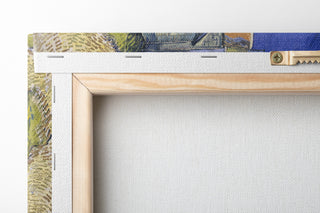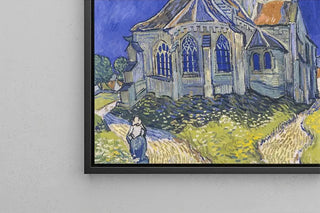Brazilian landscape with the village of Igara on the left, the Church of Saints Cosmas and Damian - Frans Post


Vue de dos

Vue de dos
Brazilian landscape with the village of Igara on the left and the church of Saints Cosmas and Damian: a harmony between nature and architecture.
This captivating painting depicts a lush landscape where tropical greenery intertwines with human structures. The vibrant shades of green and blue evoke a serene atmosphere, while the church of Saints Cosmas and Damian stands majestically, adding a touch of history and culture to the scene. The painting technique used, likely oil, captures the delicate nuances of light and shadow, creating a depth that invites visual exploration. This artwork, a true ode to the beauty of Brazil, transports the viewer on a journey to the heart of nature.
Brazilian landscape with the village of Igara on the left and the church of Saints Cosmas and Damian: a testament to Brazilian art.
The artist behind this piece, though less known, is part of a pictorial tradition that celebrates the richness of Brazilian landscapes. Influenced by 19th-century artistic movements, he seeks to capture the authenticity of rural life and the splendor of natural scenery. At that time, Brazil was undergoing a period of transformation, blending European influences with local traditions. This painting perfectly illustrates this duality, incorporating European architectural elements into a tropical setting, reflecting the evolving cultural identity of the country.
A decorative acquisition with multiple assets.
The art print of the Brazilian landscape with the village of Igara on the left and the church of Saints Cosmas and Damian is an ideal choice to enhance your interior. Whether in a living room, office, or bedroom, this piece adds a touch of exoticism and serenity. Its reproduction quality guarantees fidelity to the colors and details of the original work, allowing everyone to enjoy its aesthetic appeal. By integrating this canvas into your decor, you create an inspiring space where nature and history meet, inviting contemplation and escape.

Rendu mat

Vue de dos

Vue de dos
Brazilian landscape with the village of Igara on the left and the church of Saints Cosmas and Damian: a harmony between nature and architecture.
This captivating painting depicts a lush landscape where tropical greenery intertwines with human structures. The vibrant shades of green and blue evoke a serene atmosphere, while the church of Saints Cosmas and Damian stands majestically, adding a touch of history and culture to the scene. The painting technique used, likely oil, captures the delicate nuances of light and shadow, creating a depth that invites visual exploration. This artwork, a true ode to the beauty of Brazil, transports the viewer on a journey to the heart of nature.
Brazilian landscape with the village of Igara on the left and the church of Saints Cosmas and Damian: a testament to Brazilian art.
The artist behind this piece, though less known, is part of a pictorial tradition that celebrates the richness of Brazilian landscapes. Influenced by 19th-century artistic movements, he seeks to capture the authenticity of rural life and the splendor of natural scenery. At that time, Brazil was undergoing a period of transformation, blending European influences with local traditions. This painting perfectly illustrates this duality, incorporating European architectural elements into a tropical setting, reflecting the evolving cultural identity of the country.
A decorative acquisition with multiple assets.
The art print of the Brazilian landscape with the village of Igara on the left and the church of Saints Cosmas and Damian is an ideal choice to enhance your interior. Whether in a living room, office, or bedroom, this piece adds a touch of exoticism and serenity. Its reproduction quality guarantees fidelity to the colors and details of the original work, allowing everyone to enjoy its aesthetic appeal. By integrating this canvas into your decor, you create an inspiring space where nature and history meet, inviting contemplation and escape.



